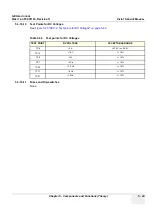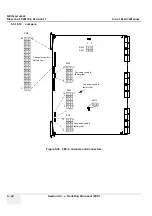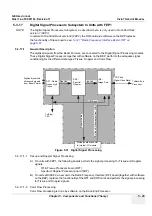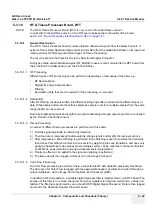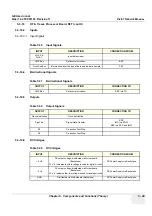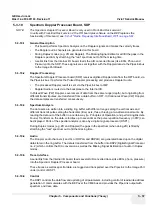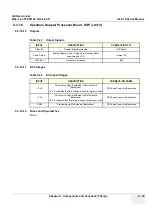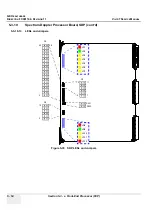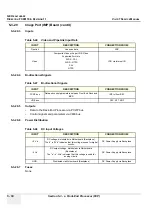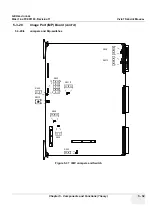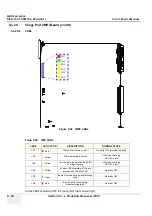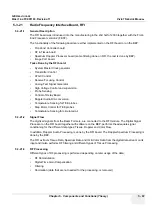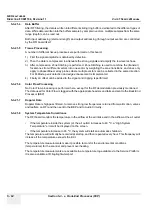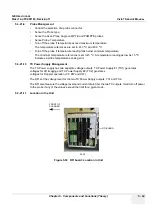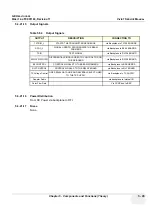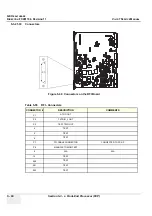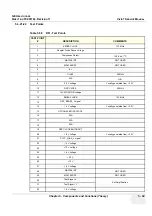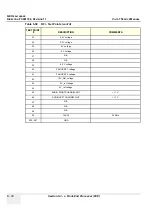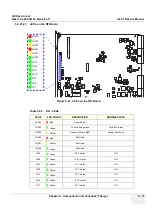
GE H
EALTHCARE
D
IRECTION
FC091194, R
EVISION
11
V
IVID
7 S
ERVICE
M
ANUAL
5 - 56
Section 5-3 - a Front-End Processor (FEP)
5-3-20
Image Port (IMP) Board
NOTE:
Image Port is called “IMPORT” in some documents.
NOTE:
The Image Port Board is only used in FEP1.
In units with FEP2, the RFI board replaces the functionality of this board, see:
Frequency Interface Board, RFI" on page 5-61
.
NOTE:
The Image Port Board is available in two versions for Vivid 7.
- IMP2, Part Number FB200991, can be used in all units with FEP1.
- IMP3, Part Number FC200120, can only be used in units with FEP1 and BEP2 installed.
5-3-20-1
General Description
The purpose of the Image Port is to capture processed data live from the scanner, or video data from
the VCR, and route this data to the appropriate locations.
The main functions of the Image Port board:
•
Capture data from RFT and SDP or the VCR (in playback), store it into Image Port’s internal
memory and then route the resulting data to the BEP via the PC2IP bus.
-
Data from the RFT Card and the SDP Card are transferred over the PipeLink in data packages
called Frames, Packets and Tuplets, all depending on size of the package.
-
At the Image Port the Packet is collapsed. A Frame contains enough data to construct one
frame (e.g. one 2D frame), while one Tuplet contains enough data to construct one vector
(e.g. one Color vector). The size of the vectors will depend on data type.
-
The Image Port demultiplexes the different types of data, groups the same types and maps
them into the proper ring buffers in the Image Memory located on the Image Port 2 card.
-
Video and S-VHS (both in PAL and NTSC format) from the VCR (or another video source) is
first digitized and then fed through a video multi-standard decoder providing decoded
luminance (black and white) and chroma (color) data.
•
Pick Color Flow data from the PipeLink bus and send it to the BEP via the PC2IP bus for processing
in software on the BEP.
•
Main Communication between BEP and the cards in the Front-End Card Rack (via the PC2IP bus
and the VME bus).
Up to eight of the data sets below can be stored live simultaneously in eight different ring buffers in
Image Port’s internal Image Memory. Typical size of the Image Memory is 256 MBytes.
•
2D Tissue data
•
Doppler data
•
M-Mode Tissue data
•
2D Flow data
•
M-Mode Color data
•
Trace data
•
Video Luminance data
•
Video Chroma data
•
Video (SVideo - PAL/NTSC, CVideo - PAL/NTSC)
•
RF data
Summary of Contents for Vivid 7
Page 1: ...GE Healthcare Operating Documentation Vivid 7 Service Manual Part Number FC091194 Revision 11...
Page 2: ......
Page 9: ...GE HEALTHCARE DIRECTION FC091194 REVISION 11 VIVID 7 SERVICE MANUAL vii JA ZH CN KO...
Page 38: ...GE HEALTHCARE DIRECTION FC091194 REVISION 11 VIVID 7 SERVICE MANUAL xxxvi...
Page 856: ...GE HEALTHCARE DIRECTION FC091194 REVISION 11 VIVID 7 SERVICE MANUAL Index 8...
Page 857: ......


